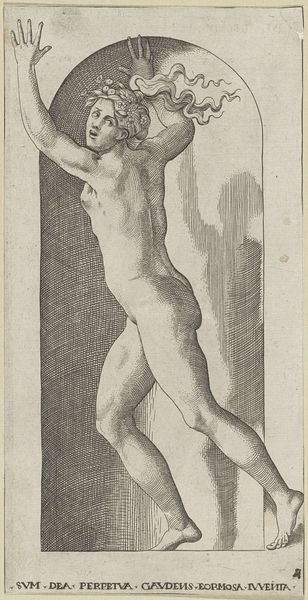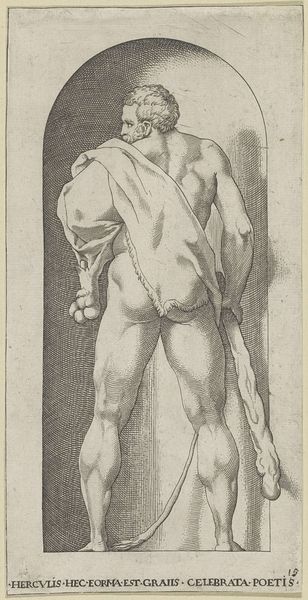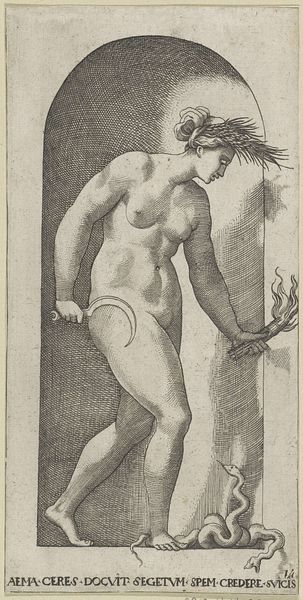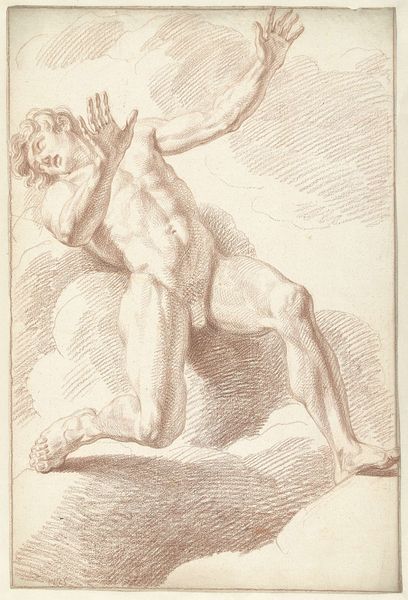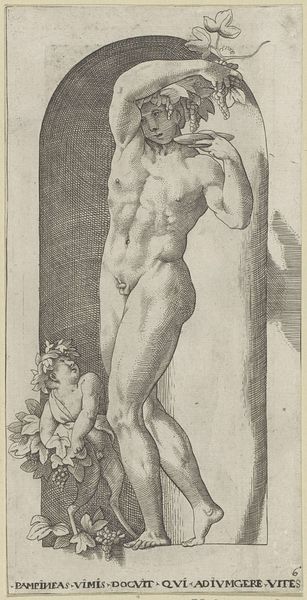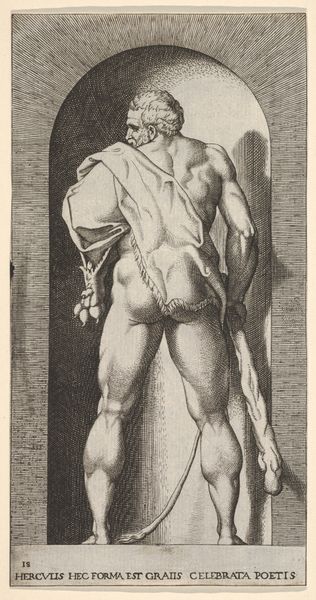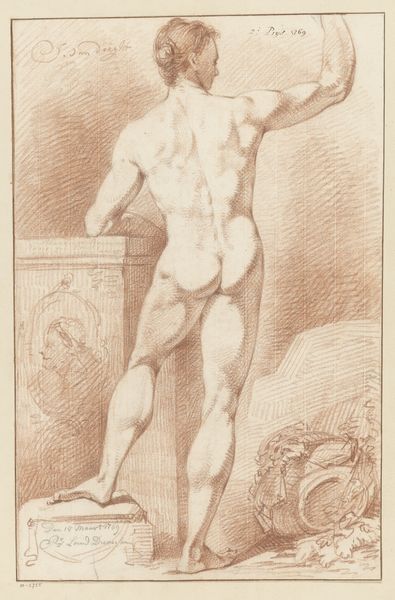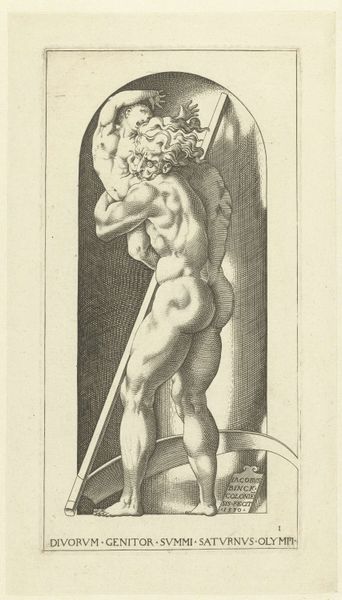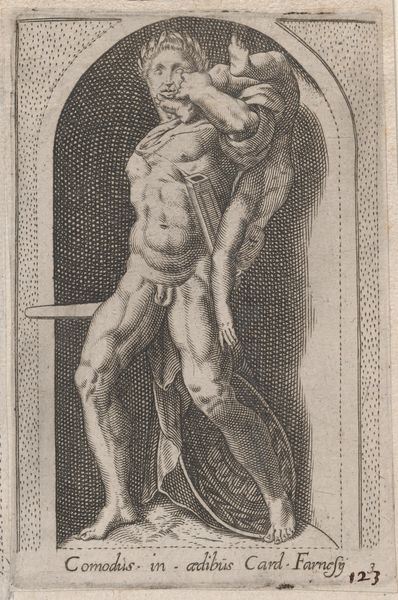
print, engraving
# print
#
mannerism
#
figuration
#
line
#
history-painting
#
nude
#
engraving
Dimensions: height 212 mm, width 107 mm
Copyright: Rijks Museum: Open Domain
Editor: This is Jacob Binck's "Mars," an engraving made sometime between 1510 and 1569, currently housed in the Rijksmuseum. It feels like such a powerful depiction of strength, but the detail is really intricate. What do you see in this piece? Curator: What strikes me first is the articulation of form achieved purely through line. Observe how the density and direction of the engraved lines not only describe the musculature of Mars, but also suggest a dynamism, a coiled potential for movement. Editor: That makes sense. I hadn't really considered the direction of the lines before. So, the way Binck uses lines creates a sense of energy? Curator: Precisely. And note the figure's contrapposto, a deliberate imbalance that forces a visual tension. The sword is held high and pulls your eye upward, while the shield anchors the figure. Do you notice how the stark contrast between the hatching within the niche behind him and the smooth plane of his shield creates an almost palpable sense of depth? Editor: Now that you point it out, definitely! The use of light and shadow with just lines is incredible. Did this play a role in Mannerist ideals? Curator: It is typical, yes, of the Mannerist embrace of artifice and technical virtuosity over pure naturalism. Form, technique, and symbolic gestures – such as the backward glance which emphasizes an inward reflection – take precedence. Consider, if you will, the tension Binck creates by juxtaposing these elements to guide the eye. Editor: I see it now. Thank you. Looking closely at just the lines has completely changed how I view this piece. Curator: Indeed. It demonstrates how a careful consideration of the formal elements unlocks the artwork's deeper potential.
Comments
No comments
Be the first to comment and join the conversation on the ultimate creative platform.
